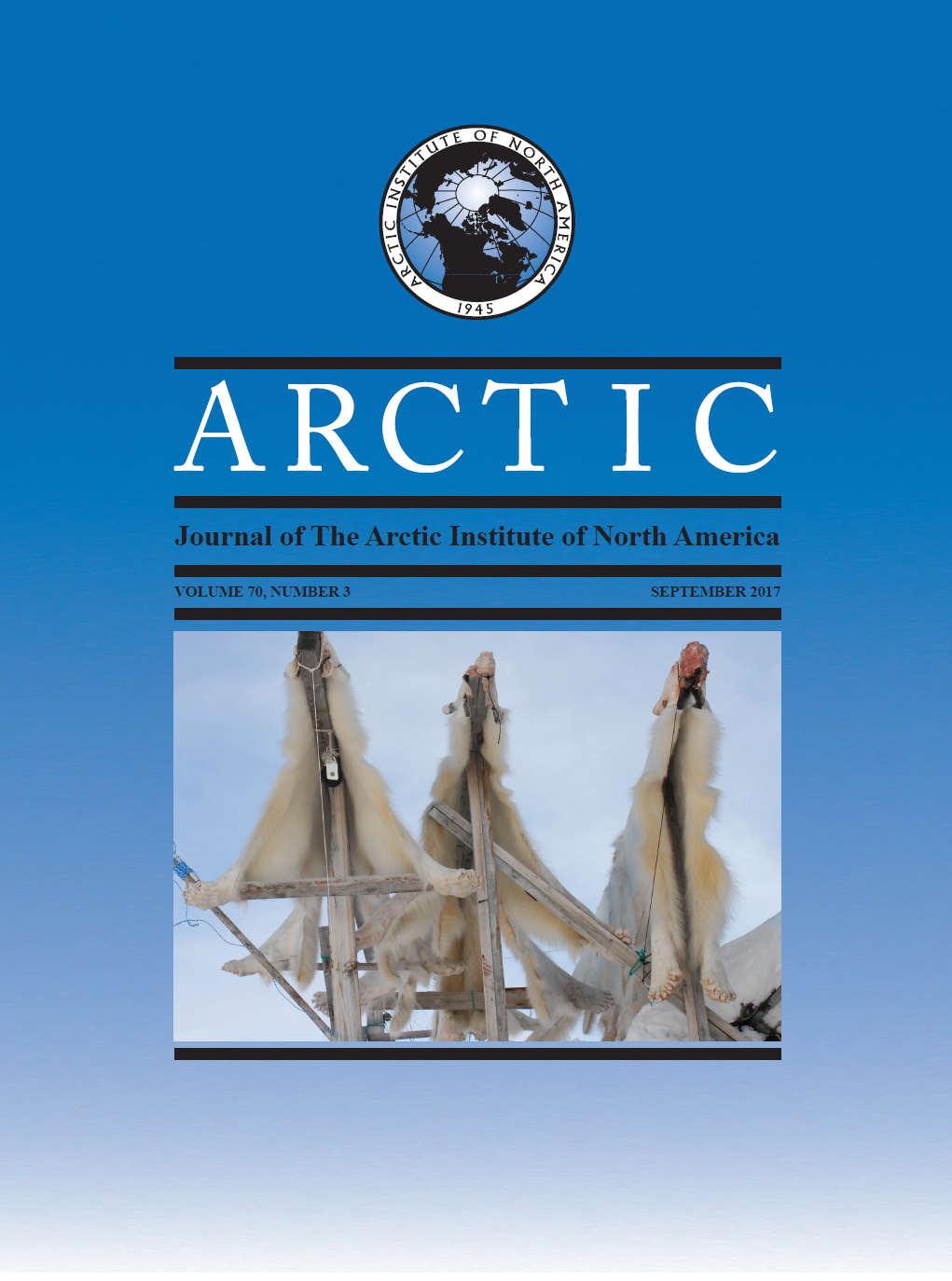Polar bear (<i>Ursus maritimus</i>) Migration from Maternal Dens in Western Hudson Bay
DOI:
https://doi.org/10.14430/arctic4668Keywords:
denning, Hudson Bay, migration, orientation, polar bear, reproduction, Ursus maritimusAbstract
Migration is a common life history strategy among Arctic vertebrates, yet some of its aspects remain poorly described for some species. In February-March, post-parturient polar bears (Ursus maritimus) in western Hudson Bay, Canada, migrate from maternity den sites on land to the sea ice with three- to four-month-old cubs. We investigated this migration using data from 10 adult females fitted with satellite-linked global positioning system collars tracked in 2011 – 16. Directed movement towards the coast began on average on 1 March (range: 31 January to 23 March) and took a mean of 7.8 days to reach the coast. Bears traveled 18 to 100 km from their dens to the coast (mean = 63 km) at a mean rate of 6.7 km/d. Movements were highly directed, with an approximate northeast orientation, but did not follow the shortest path to the coast. Observed migration patterns were broadly similar to those previously documented, although mean departure date from dens was about four days earlier and mean movement rate was only 40% of that from the late 1990s. Given the sensitivity of polar bears to climate change, the phenology of denning may be a meaningful parameter for long-term monitoring.


